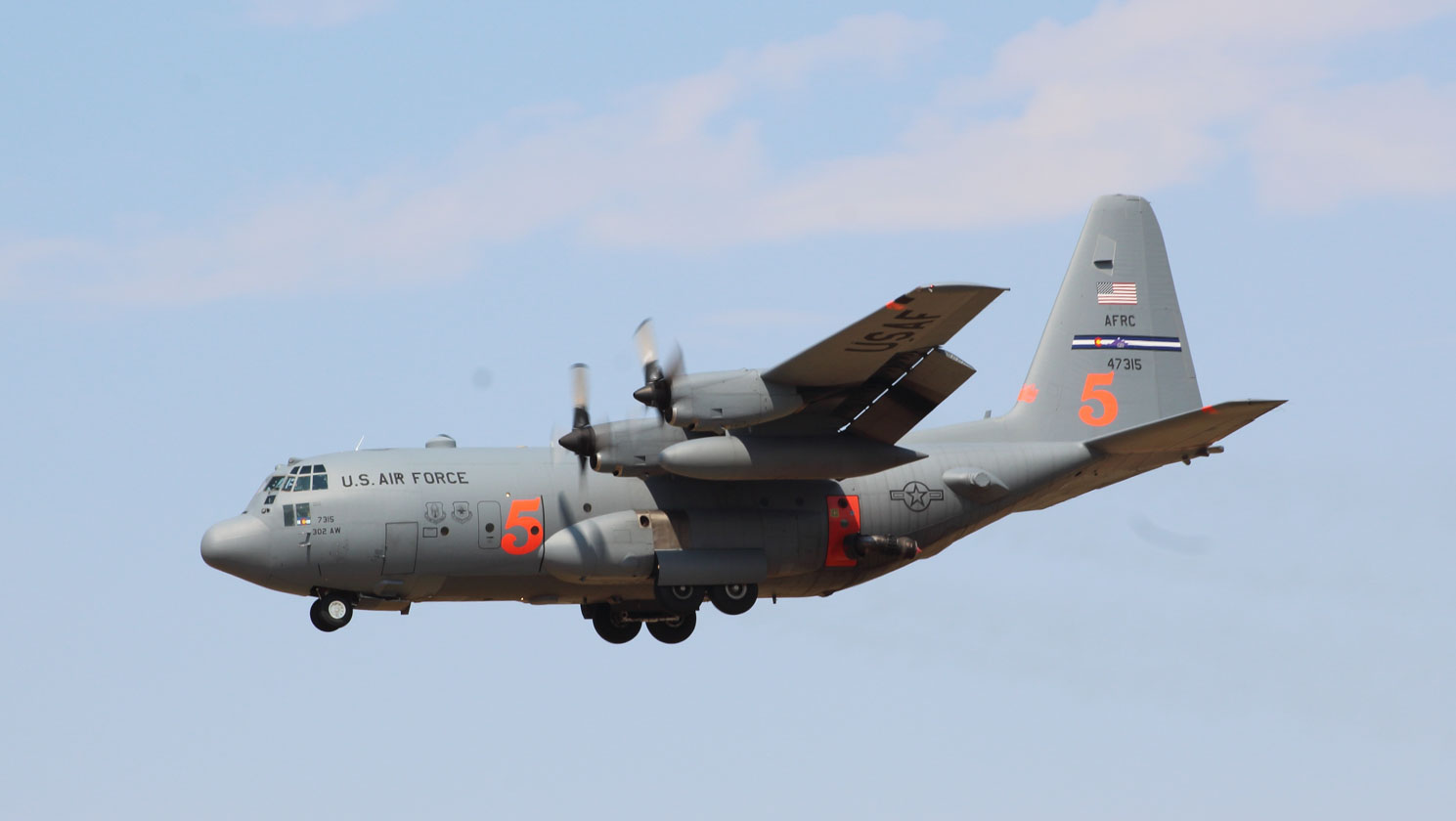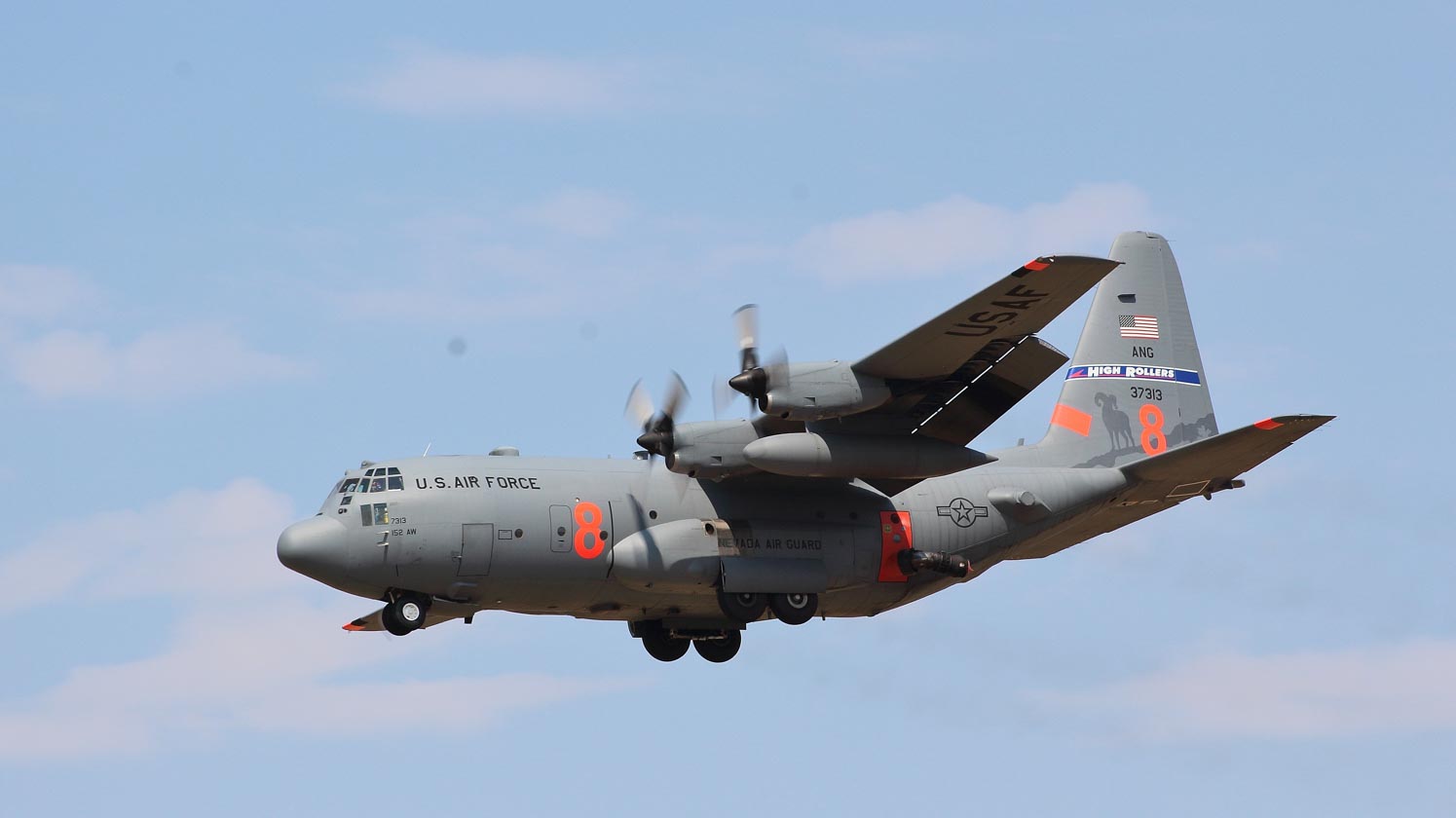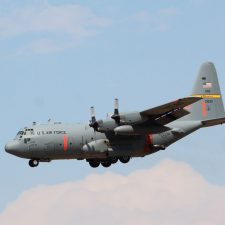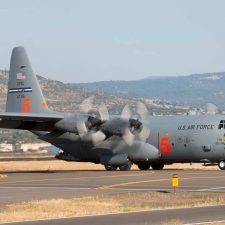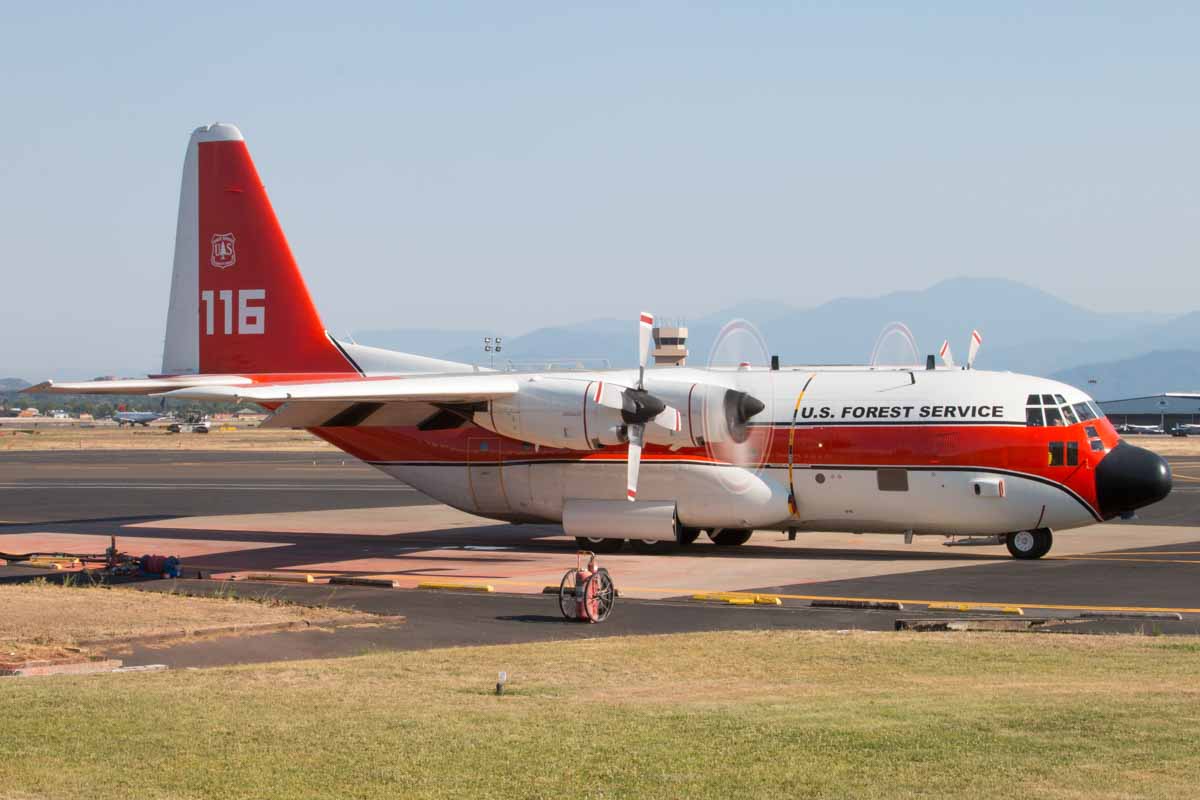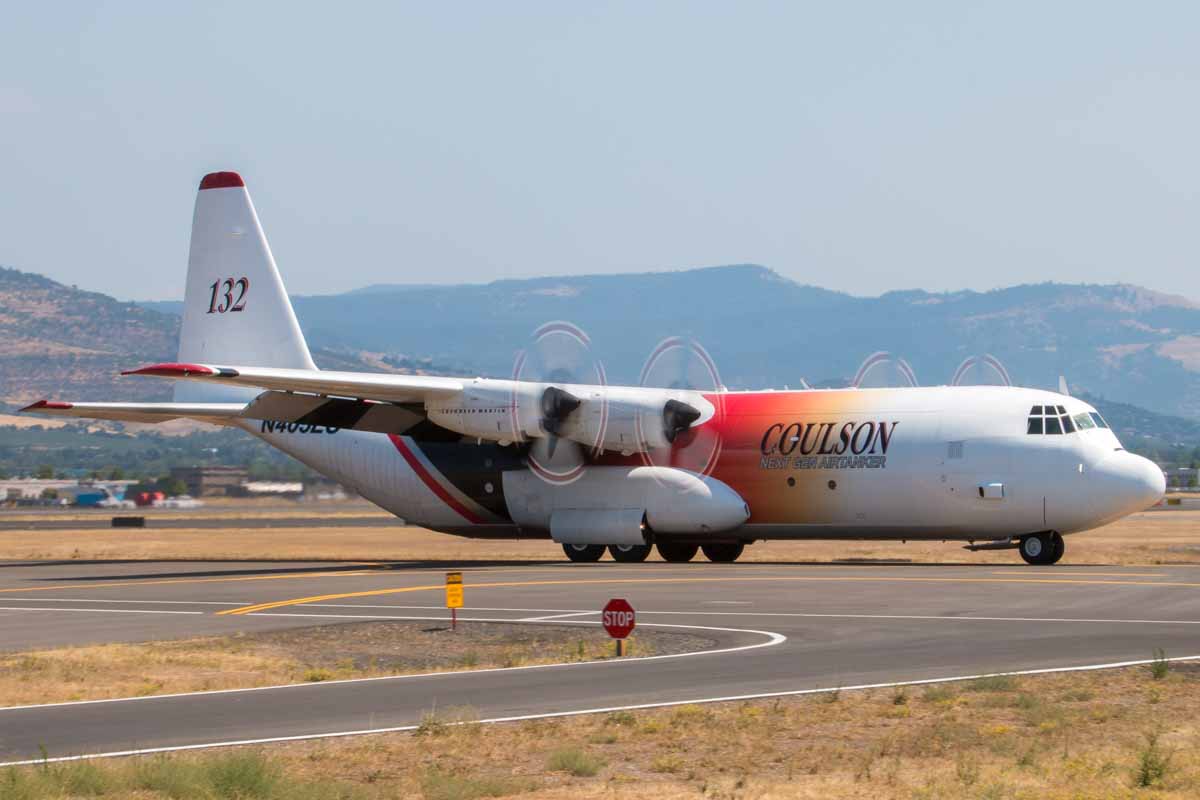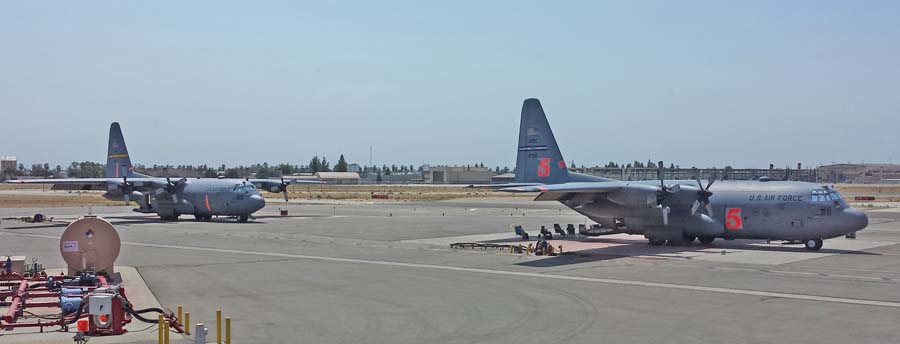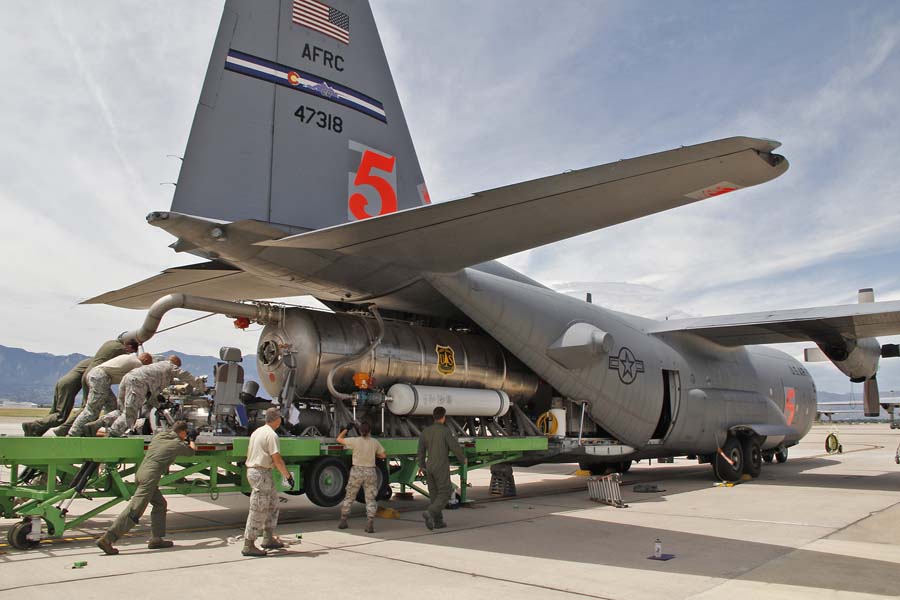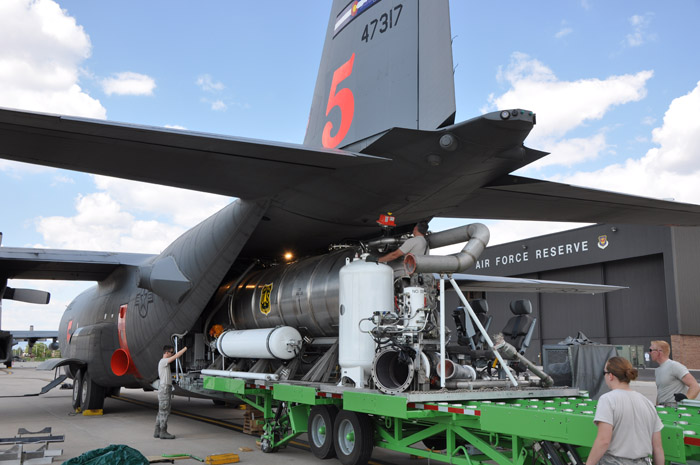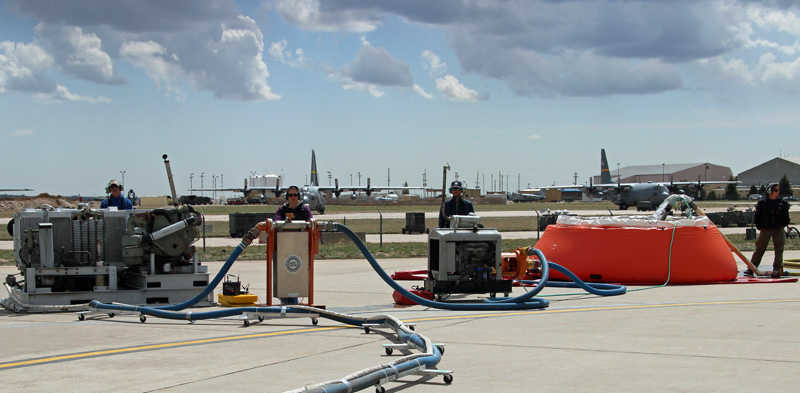Above: MAFFS 1, normally based at Cheyenne, on approach at Fresno International Airport August 5, 2017. Photo by L.S. Braun.
(Originally published at 7:40 p.m MDT August 6, 2017)
L.S. Braun took photos of all three Modular Airborne FireFighting System (MAFFS) aircraft that are currently activated. The C-130’s were approaching Runway 29R at Fresno International Airport on August 5.
Thanks L.S. Braun!
C-130’s can be converted temporarily to a 3,000-gallon air tanker in a few hours by installing the MAFFS unit. In the United States they are used in a surge capacity when additional air tankers are needed to supplement the existing contracted aircraft.
